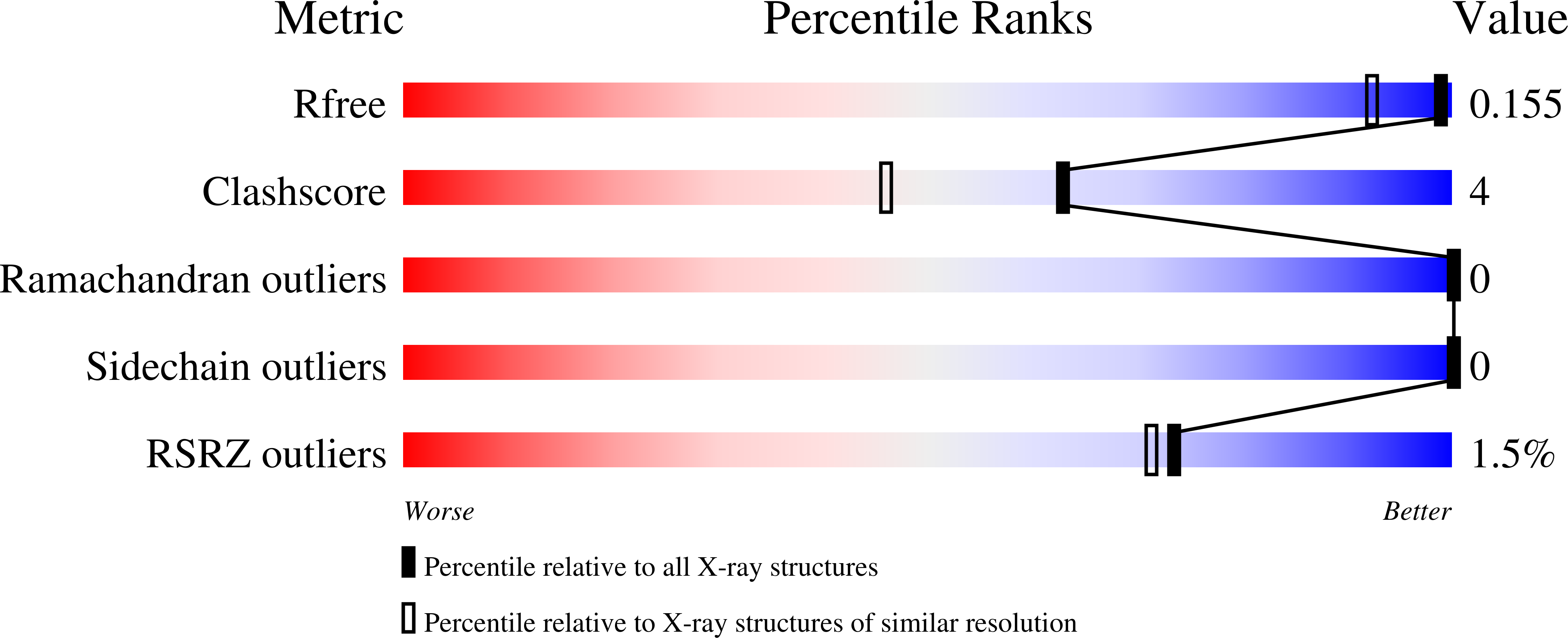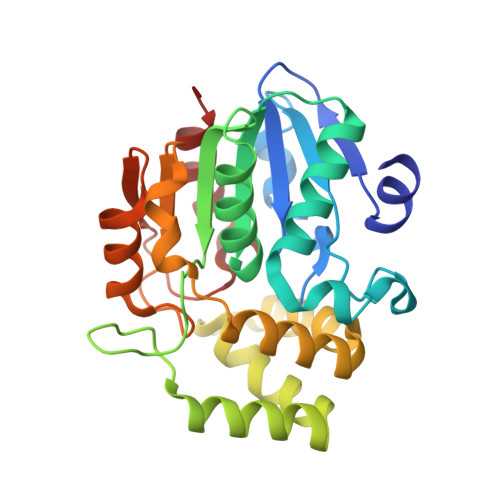Inhibition of strigolactone receptors byN-phenylanthranilic acid derivatives: Structural and functional insights.
Hamiaux, C., Drummond, R.S.M., Luo, Z., Lee, H.W., Sharma, P., Janssen, B.J., Perry, N.B., Denny, W.A., Snowden, K.C.(2018) J Biol Chem 293: 6530-6543
- PubMed: 29523686
- DOI: https://doi.org/10.1074/jbc.RA117.001154
- Primary Citation of Related Structures:
6AP6, 6AP7, 6AP8 - PubMed Abstract:
The strigolactone (SL) family of plant hormones regulates a broad range of physiological processes affecting plant growth and development and also plays essential roles in controlling interactions with parasitic weeds and symbiotic fungi. Recent progress elucidating details of SL biosynthesis, signaling, and transport offers many opportunities for discovering new plant-growth regulators via chemical interference. Here, using high-throughput screening and downstream biochemical assays, we identified N -phenylanthranilic acid derivatives as potent inhibitors of the SL receptors from petunia (DAD2), rice (OsD14), and Arabidopsis (AtD14). Crystal structures of DAD2 and OsD14 in complex with inhibitors further provided detailed insights into the inhibition mechanism, and in silico modeling of 19 other plant strigolactone receptors suggested that these compounds are active across a large range of plant species. Altogether, these results provide chemical tools for investigating SL signaling and further define a framework for structure-based approaches to design and validate optimized inhibitors of SL receptors for specific plant targets.
Organizational Affiliation:
From the New Zealand Institute for Plant and Food Research Limited, Private Bag 92169, Auckland 1142, New Zealand, cyril.hamiaux@plantandfood.co.nz.
















